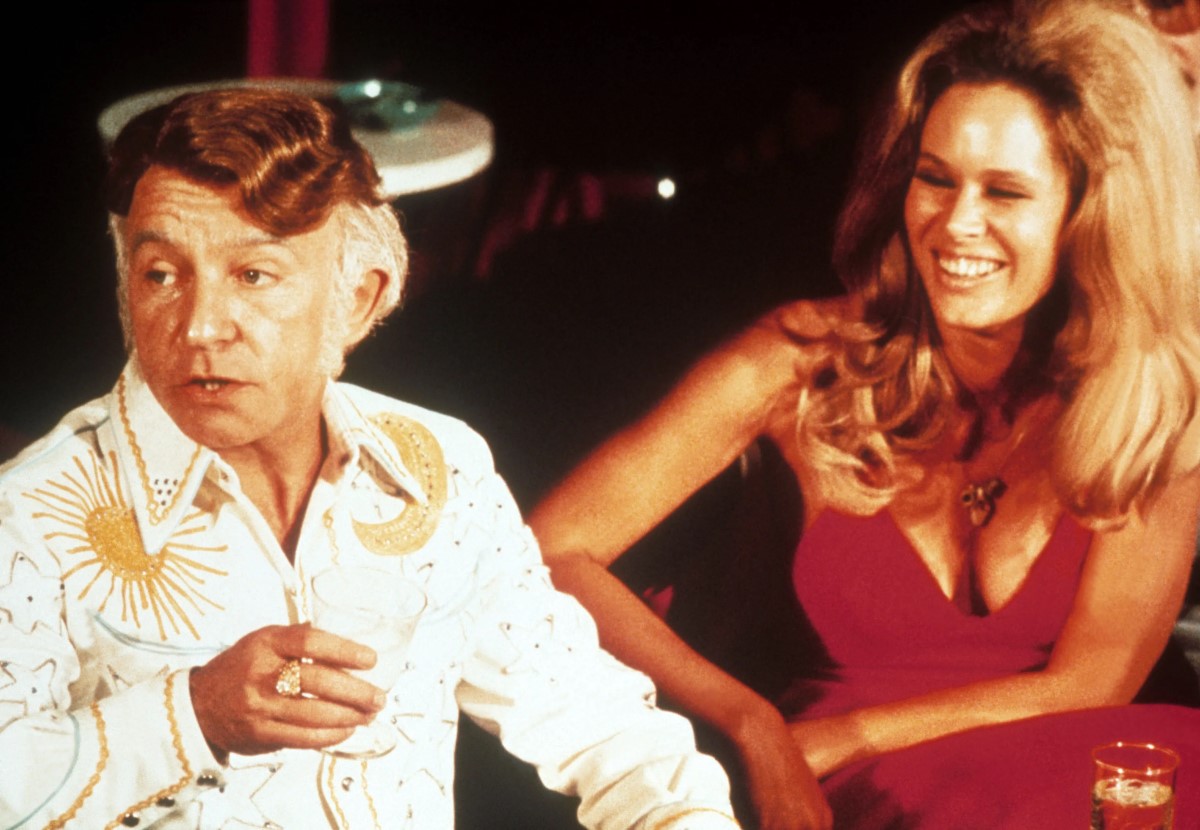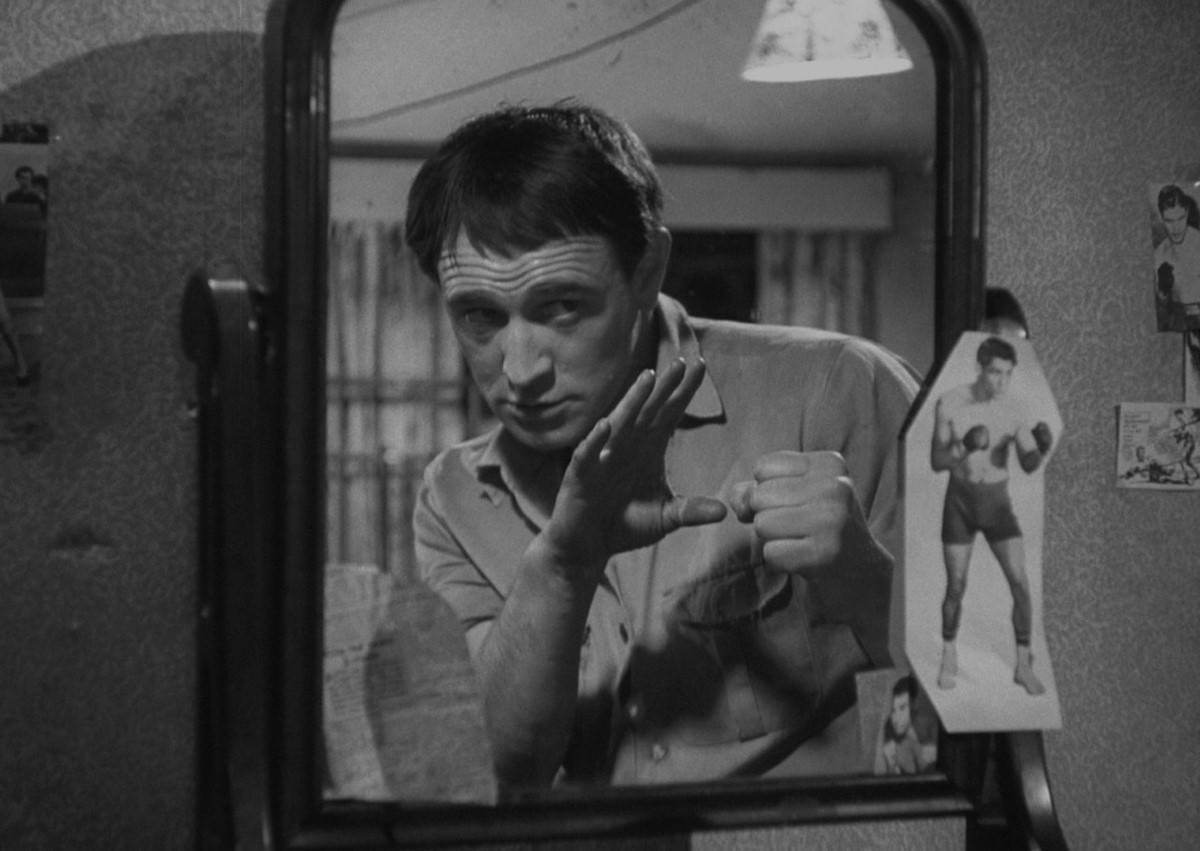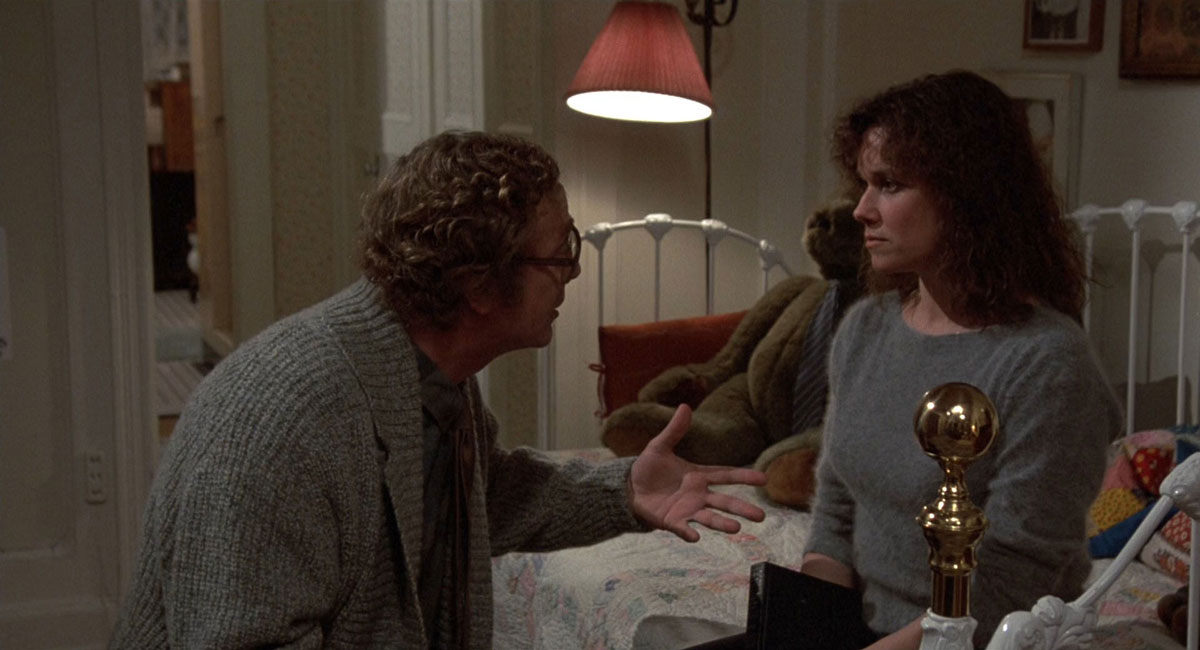by John W. English
As the critic that filmmakers, buffs and other critics most often read, Pauline Kael’s approach to criticism has special interest. Working in the tradition of Gilbert Seldes, Otis Ferguson, James Agee and Robert Warshow—that the best film critics use everything they know—Kael has already spawned her own proteges: Gary Arnold of the Washington Post, Paul Zimmerman of Newsweek, Roger Ebert of the Chicago Tribune, David Denby, Stephen Farber and others.
Her method eschews simple theories formulas: “Those who ask for objective standards seem to want a theory of criticism which makes the critic unnecessary. And he is expendable if categories replace experience,” she writes in “I Lost It at the Movies.”1 Kael insists that film criticism not only draws from film history but also other fields of culture and that critics must judge films by how they extend experience and deliver pleasure. “You must use everything you are and everything you know that is relevant,” she says succinctly.
Kael defines the role of the critic as messianic:
to help see what is in the work, what is in it that shouldn’t be, what is not in it that could be. He is a good critic if he helps people understand more about the work than they could see for themselves; he is a great critic, if by his understanding and feeling for the work, by his passion, he can excite people so that they want to experience more of the art than is there, waiting to be seized.2
She also believes that critics must rely on their own genuine, emotional responses to work and not aesthetic yardsticks or standards. For her, criticism is mostly comparative and one works from the good taste of the past. “I don’t trust critics who care only for the highest and the best; it’s an inhuman position, and I don’t believe them. I think it’s simply their method of exalting themselves,” she once wrote in her New Yorker column 3 (perhaps subtly chiding the High Browism of Simon).
Kael readily admits that “good-bad movies” offer both “minimal entertainment for a relaxed evening’s pleasure” as well as satisfy her appetite for trash. But she also recognizes her responsibility to guide readers selectively:
It’s part of the function of a movie critic to know and indicate the difference between a bad movie that doesn’t much matter because it’s so much like other bad movies and a bad movie that matters . . . because it affects people strongly in new, different ways.4
To accomplish this objective, Kael enlivens reviews with her knack for amateur sociology and occasionally gives almost as much space to the audience reaction as to the movie itself. In reviewing “Billy Jack,” for example, she combined an insight on the audience with another forte, a bit of autobiography:
Though the audience I saw ‘Billy Jack’ with was almost all male, it responded happily to the independent, tough-talking girls. It is a curious fact of movie history (and one that may be lost sight of) that, in general, the men always did like the independent women. It was the women who like the sobbing and suffering ladies. (My father’s favorite actresses were Joan Blondell and Barbara Stanwyck; my mother’s were Helen Hayes and Ruth Chatterton.)5
Along with being in tune with film audiences, Kael exhibits a fierce loyalty to her medium though certainly not to its present system of production and distribution. Perhaps the most anti-Hollywood of film critics, Kael has boldly hypothesized that the size of a picture’s budget appears inversely related to its quality, enraging producers. She further proposed that innovative filmmakers begin distributing their work themselves as a way to subvert the system run by movie moguls and their bookkeepers.
Kael’s popular appeal stems in part from her high involvement with films and their audiences but also from her readability. In a Village Voice review of her sixth book,6 “Reeling,” Richard Gilman noted her increased use of fashionable diction—”film’’ became “movies,” and hip words such as “dig,” “downer,” and “macho” mixed with 1930s pejoratives such as “crummy” and “klutzy”—became part of her new voice. More than anything, though, Gilman accuses her of gush, unabashed enthusiasm for American movies, a charge which she admits to even in the book’s title.
Yet her hyperenthusiasm has earned other critical comments. Some have said that her overuse of absolute superlatives is what one might expect from a critic unable to convince a reader by argument, allusion or example; in short, her insensate praise reduces her reviews to meaninglessness. Time’s Jay Cocks complained that film companies were frequently reprinting her entire reviews in advertisements, converting her criticism into promotional material and press agentry and making her part of the very marketing process of the system she so much despises.
Kael earns criticism in one other area. Perhaps more than any other critic, she has gained a reputation for having criticized her peers in print.7 Dwight Macdonald, former Esquire film critic, who endured numerous Kael tongue-lashings, retaliated in a review of her first book: “She is obsessed with other critics, using their opinions as a springboard for her own performance and almost always quoting them adversely, and often unfairly.” Macdonald also observed that Kael considered other critics as “rivals or butts,” neither of which could be allowed to impede her success. True, Kael has repeatedly blasted Bosley Crowther, Judith Crist, Stanley Kauffmann, Andrew Sarris, and even her New Yorker colleagues Penelope Gilliat and Brendan Gill, yet she defends her tactics with a single-minded purpose: “In order to try for a fresh approach to certain movies, I tried to clear away the Eastern view, my aim being for people to look at movies somewhat differently from the delivered dicta.”
• • • •
“Over the last few years there’s been a change in status in this field—movies have evolved into film” notes Joy Boyum of the Wall Street Journal. “Film was implied to be more important than movies and possibly an art. Movie reviewing evolved into something called criticism. Yet these labels seemed to change without the objects themselves changing very much. So there also was a confused set of demands and questions. Reviewing has never traditionally been confused with criticism. You wouldn’t confuse the remarks of a book reviewer in The New York Times with remarks of Lionel Trilling, who wrote criticism. But in the case of film, there’s no real body of criticism, the only criticism there is is reviewing, which confuses the issue. When the reviews of James Agee were published in 1957, they were published as James Agee’s Reviews and Comments. Ten years later, Otis Ferguson’s reviews were collected under the title of The Film Criticism of Otis Ferguson. Both wrote reviews. But what had happened was a change in our perception of them rather than a change in the content.”
• • • •
In a war to have “the first word,” as they say, New York film critics have increasingly been rushing their reviews into print even before the film premieres. (Pauline Kael set the record in 1975 when she reviewed a rough cut of “Nashville” four months before it was released.) In an effort to formalize the oft-violated ground rules (which said reviews were to run the day after the film opened) the three New York daily papers revamped their policies in mid-1978 to publish reviews on the same day that films opened, necessitating advance private screenings for critics.
• • • •
Today’s film critics are the fourth generation of their kind. Their writing considers film in an entirely different way than did the earliest critics who raved with fascination over their infant medium or even those second and third generation critics who wrote about a mass medium and powerful cultural force in its heyday. Today, critics are aware that film is a diminishing medium and it faces stiff competition for public attention in an era of multi-media.
• • • •
A Public Interest listing of the nation’s leading intellectuals cited only two critics: Pauline Kael and John Simon.
• • • •
Because the public sees more films than it reads books, it places enormous pressures on critics to deal with a staggering volume of material, grouses Andrew Sarris: “Film critics are expected to see between 400 and 500 films a year and be knowledgeable about them, while book reviewers can be selective and aren’t expected to have read everything. Film reviewers are expected to be conversant with all movies past, present and future.”
• • • •
Although her published reviews often run up to 5,000 words, New Yorker film critic Pauline Kael is paid only for the first 800.
• • • •
Time critic Richard Schickel, speaking at a Columbia University colloquium, advised, “Practicing journalists are first to give a response to a new work and get a discussion going. Our initial response is sometimes subject to change. Critics should be very modest about what they say because anything they say isn’t the last word on it. There’s also something advantageous about shooting from the hip, offering a true response that’s fresh, direct and unpretentious. There’s often such wonderful accuracy in instant reviewing.”
• • • •
As was his style, Robert Warshow, Commentary critic until 1955, said simply: “A man watches a movie, and the critic must acknowledge that he is that man.”
• • • •
Among those who believe critics should primarily write about their proprioceptive responses to film—those physiological feelings of surprise, joy, terror, sadness, anger, etc.—is Bruce Cook, of the now extinct National Observer:
You don’t go to the movies to be instructed. You go to the movies to be hit between the eyes—splat!—with action, energy, emotion, most of all with that grand sense of style that you get from no other form. The very nature of film limits intellectual content. Film is something you do in the dark, a dream run before your eyes, a fantasy.8
• • • •
“Movies are one product you buy sight unseen, unpretested. If you buy a ticket, you’ve voted for it,” Judith Crist told a Hunter College audience. She also urged moviegoers to get over their awe of critics’and openly react to pictures: demand one’s money back from the box office if one gets outraged and compliment the theatre manager if one is truly pleased by what one sees.
• • • •
Advocating a film reviewing system Hollywood could live with, Don Carle Gillette wrote in the Journal of the Producers Guild of America:
Since movies are made for the entertainment of the general public, the fairest way for a reviewer to judge whether or not they fulfill that objective is to see each picture in a theatre where the reactions of the paying customers can be noted. Any good and honest reporter can cover these showings. He merely has to report impartially the regular audience response. That, plus the film credits and a brief synopsis of the story, will give prospective ticket buyers the information they want.9
• • • •
Mario Puzo, author of “The Godfather,” analyzed how critics apportioned credit for the movie’s success:
30% for director Francis Ford Coppola
20% for Marlon Brando
15% for Al Pacino
5% for set director, costumes, etc.
5% for editing
0% for the best-selling novel from which the film’s characters and incidents were taken.
10% for the movie critics themselves.
Total: 85% Critics never give any artist 100% credit for his work, Puzo insisted in New York magazine.10
• • • •
Auteurist Vincent Canby defined one handicap critics have: not being able to erase from their memories the anticipations and even the prejudices they have stored up through their experience with the films of any filmmaker.
• • • •
A film critic not knowing production technique is like a literary critic not knowing grammar,” critic Frank Rich told an N.Y.U. class.
Critics should not write about technique, however, insists Pauline Kael, unless it’s used for something worth doing.
• • • •
Clifford A. Ridley believes critics should serve readers a full table of delights:
Simply telling the critic, “Quit talking around and just tell me what you think,” is doing yourself no service, because knowing a conclusion without knowing the reasoning and point of view that underlie it is equivalent to knowing almost nothing at all. The critic who delivers only opinions” is like the chef who cooks nothing but hamburgers. He’s squandering not only his talent (assuming he has any), but also the potential of his materials. The diner—and reader—deserves more.”11
• • • •
Among those who abhor the trend toward thumbs up-thumbs down criticism is Stanley Kauffmann, who wrote in The New Republic:
For many American decades, approximately since the heyday of Mencken, the chief hallmark of critics on “journals of opinion” and quarterlies has been nay-saying. For this, much of the time, we can be grateful. But out of it has grown a wretched rule of thumb: the critic who says “no” must be more perspective than the one who says “yes” or even “no, but,” and the critic who says the flat “no” most frequently—and violently—is the best.
Unarguably, most of what is produced in any art, particularly the audience arts of theatre and film, is junk; and obviously the nay-saying is a reaction against the most persistent yea-saying of the mass circulation press. Still, through the decades, the nay-saying has become almost as much of a reflex, in its way, as the mass yea-saying. What’s worse, the nay-saying has sometimes been a cover for a lack of aesthetic sensibility as abysmal as that in most of the booster mass reviewers. The diction and the air differ; but on each side a gallery is being played to, by critics who are not much more than players to their respective galleries.
I deplore both sides, and specially deplore the sort of mind which suspects that the critic who pans a work is, arbitrarily, sounder than the one who finds merit in it. I’ve done my share of panning and hope to do plenty more, but where an imperfect, even failed work has merits in it, I hope to exercise what discrimination I have (a modest cough here) to point them out, as pertinent to my own bona fides, the artists’ due, and the reader’s possible interest in coming along.12
• • • •
From reading todays critics, one gets the impression that little had changed since Otis Ferguson, who reviewed films for The New Republic from 1934 to 1942, wrote: “Professional criticism, by and large, amounts to little more than parasitism and futility. . . . It is a little shameful to be always on the fringe and all the time talking, talking.”13
• • • •
Yet a few young critics still dream of better times. Writing in The New York Times, Stephen Farber said, “The quality of film criticism is of concern to anyone who cares about movies. Ideally there should be an intense, on-going dialogue between critics and filmmakers from which both can learn. But the critic’s short-sightedness and fickleness inhibit that exchange of ideas. We are still a long way from achieving a serious film community in America.”14
* * *
Notes
1 Pauline Kael, I Lost It At the Movies (Boston: Little, Brown and Company, 1965), page 309.
2 Ibid., page 308.
3 “Notes on Heart and Mind,” by Pauline Kael, The New Yorker, Jan. 23, 1971, page 76.
4 Pauline Kael, Kiss Kiss Bang Bang, (Boston: Little, Brown & Co., 1968), page 21.
5 Pauline Kael, Deeper Into Movies (Boston: Little, Brown & Co., 1973), page 345.
6 “Pauline Kael Lost It All At the Movies,” by Richard Gilman, Village Voice, June 7, 1976, page 40.
7 Cleon Daniel King, “A Profile of Pauline Kael,” unpublished honors thesis, University of Georgia, 1976.
8 “Dreamstyle, Bondstyle, Turnstile: Surface is All in the Genre Films,” by Bruce Cook, The National Observer, Dec. 21, 1974, p. 18.
9 “New Film-Reviewing System Needed,” by Don Carle Gillette, The Journal of the Producers Guild of America, Sept. 1972, p. 31.
10 Interview with Mario Puzo, New York, August 21, 1972, p. 29.
11 “How to Read Critics for Fun & Profit,” by Clifford A. Ridley, The National Observer, Jan. 1, 1972, p. 16.
12 “The Ruling Class,” by Stanley Kauffmann, The New Republic, Sept. 16, 1972, p. 22.
13 “Advice to Readersand Critics,” by Otis Ferguson .Film Comment, Sept. 1973,p. 15.
14 “Yesterday’s Heroes, Today’s Has-Beens?” by Stephen Farber, The New York Times, Jan. 7, 1973, Movie page, Section II.
Source: John W. English, Criticizing the Critics, 1979




